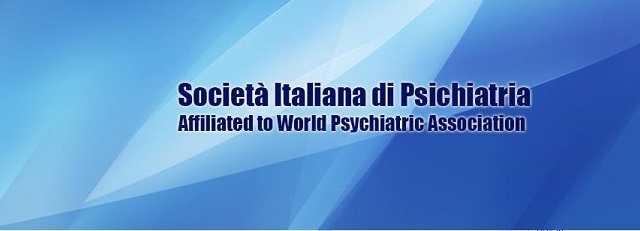
La Società Italiana di Psichiatria, quale Società affiliata, condivide e fa propri i contenuti del documento della World Psychiatric Association sulla “Identità di Genere e sull’Orientamento, Attrazione e Comportamento Omosessuale”, ribadendo in particolare che l’omosessualità, conformemente a quanto già definito nel 1992 dalla Organizzazione Mondiale della Sanità, non può considerarsi una patologia, in quanto variante del normale comportamento sessuale umano, e come tale, non è da considerarsi condizione che necessita di trattamento psichiatrico.
Contenuto del documento: WPA Position statement on same sex FINAL – 21March2016
WPA Position Statement on Gender Identity and Same-Sex Orientation, Attraction, and Behaviours
Background
Recent controversies in many countries suggest a need for clarity on same-sex orientation, attraction, and behaviour (formerly referred to as homosexuality).
Along with other international organisations, World Psychiatric Association (WPA) considers sexual orientation to be innate and determined by biological, psychological, developmental, and social factors.
Over 50 years ago, Kinsey et al (1948) documented a diversity of sexual behaviours among people. Surprisingly for the time, he described that for over 10% of individuals this included same-sex sexual behaviours. Subsequent population research has demonstrated approximately 4% of people identify with a same-sex sexual orientation (e.g., gay, lesbian, and bisexual orientations). Another 0.5% identify with a gender identity other than the gender assigned at birth (e.g., transgender) (Gates 2011).
Globally, this equates to over 250 million individuals.
Psychiatrists have a social responsibility to advocate for a reduction in social inequalities for all individuals, including inequalities related to gender identity and sexual orientation.
Despite an unfortunate history of perpetuating stigma and discrimination, it has been decades since modern medicine abandoned pathologising same-sex orientation and behaviour (APA 1980) The World Health Organization (WHO) accepts same-sex orientation as a normal variant of human sexuality (WHO 1992). The United Nations Human Rights Council (2012) values Lesbian Gay Bisexual and Transgender (LGBT) rights. In two major diagnostic and classification systems (International Classification of Diseases (ICD-10) and DSM-5), same sex sexual orientation, attraction, and behaviour and gender identity are not seen as pathologies (WHO 1993, APA 2013).
There is considerable research evidence to suggest that sexual behaviours and sexual fluidity depend upon a number of factors (Ventriglio et al 2016). Furthermore, it has been shown conclusively that LGBT individuals show higher than expected rates of psychiatric disorders (Levounis et al 2012, Kalra et al 2015), and once their rights and equality are recognised these rates start to drop (Gonzales 2014, Hatzenbuehler et al 2009,
2012, Padula et al 2015)
People with diverse sexual orientations and gender identities may have grounds for exploring therapeutic options to help them live more comfortably, reduce distress, cope with structural discrimination, and develop a greater degree of acceptance of their sexual orientation or gender identity. Such principles apply to any individual who experiences distress relating to an aspect of their identity, including heterosexual individuals.
WPA believes strongly in evidence-based treatment. There is no sound scientific evidence that innate sexual orientation can be changed. Furthermore, so-called treatments of homosexuality can create a setting in which prejudice and discrimination flourish, and they can be potentially harmful (Rao and Jacob 2012). The provision of any intervention purporting to “treat” something that is not a disorder is wholly unethical.
Action
1.The World Psychiatric Association (WPA) holds the view that lesbian, gay, bisexual, and transgender individuals are and should be regarded as valued members of society, who have exactly the same rights and responsibilities as all other citizens. This includes equal access to healthcare and the rights and responsibilities that go along with living in a civilised society.
2.WPA recognises the universality of same-sex expression, across cultures. It holds the position that a same-sex sexual orientation per se does not imply objective psychological dysfunction or impairment in judgement, stability, or vocational capabilities.
3.WPA considers same-sex attraction, orientation, and behaviour as normal variants of human sexuality. It recognises the multi-factorial causation of human sexuality, orientation, behaviour, and lifestyle. It acknowledges the lack of scientific efficacy of treatments that attempt to change sexual orientation and highlights the harm and adverse effects of such “therapies”.
4.WPA acknowledges the social stigma and consequent discrimination of people with same-sex sexual orientation and transgender gender identity. It recognises that the difficulties they face are a significant cause of their distress and calls for the provision of adequate mental health support.
5.WPA supports the need to de-criminalise same–sex sexual orientation and behaviour and transgender gender identity, and to recognise LGBT rights to include human, civil, and political rights. It also supports antibullying legislation; anti-discrimination student, employment, and housing laws; immigration equality; equal age of consent laws; and hate crime laws providing enhanced criminal penalties for prejudice-motivated violence against LGBT people.
6.WPA emphasises the need for research on and the development of evidence-based medical and social interventions that support the mental health of lesbian, gay, bisexual, and transgender individuals
References
1.American Psychiatric Association (1980). Diagnostic and Statistical Manual of Mental Disorders (3rd edition). Washington, DC: APA.
2.American Psychiatric Association (2013). Diagnostic and Statistical Manual of Mental Disorders (DSM-5) (5th edition). Washington, DC: APA.
3.Gates GJ (2011). How many people are lesbian, gay, bisexual and transgender? Accessed March 4, 2016. Available at:
http://williamsinstitute.law.ucla.edu/wp-content/uploads/Gates-
How-Many-People-LGBT-Apr-2011.pdf
4.Gonzales, G (2014). Same-sex marriage — a prescription for better health. New England Journal of Medicine 370: 1373-1376.
5.Hatzenbuehler ML, Keyes KM, Hasin D. (2009). State-level policies and psychiatric morbidity in lesbian, gay and bisexual populations.
American Journal of Public Health, 99: 2275-2281.
6.Hatzenbuehler ML, O’Cleingh C, Grasso C, Meyer K, Safren S, Bradford J (2012). Effect of same sex marriage laws on health care use and expenditures in sexual minority men: a quasi-natural experiment. American Journal of Public Health, 102: 285-291.
7.Kalra G, Ventriglio A, Bhugra D (2015). Sexuality and mental health: issues and what next? International Review of Psychiatry, 27: 463-469.
8.Kinsey AC, Pomeroy CB, Martin CE (1948). Sexual Behavior in the Male. Bloomington, IN: Indiana University Press.
9.Levounis P, Drescher J, Barber ME (2012). The LGBT Casebook.
Washington, DC: APA.
10.Padula William V, Heru S, Campbell JD (2015). Societal
Implications of Health Insurance Coverage for Medically Necessary
Services in the US Transgender Population: A Cost-Effectiveness Analysis. Journal of General Internal Medicine: 1-8.
11.Rao TSS, Jacob KS (2012). Homosexuality and India. Indian Journal of Psychiatry, 54: 1-3.
12.United Nations Human Rights Office of the High Commissioner (2012). Born Free and Equal: Sexual Orientation and Gender identity in International Human Rights Law. New York and Geneva: Office of the High Commissioner United Nations Human Rights; 2 Available from: http://www.ohchr.org/Documents/…..EqualLowRes.pdf. [Last accessed on 2013 Dec 31]
13.Ventriglio A, Kalra G, Bhugra D (2016). Sexual minorities and sexual fluidity. Discussion paper (available from authors).
14.World Health Organization (WHO) (1992). International Classification of Disease 10: Classification of Behavioural and Mental Disorders. Geneva: WHO.
The writing group was led by Professor Dinesh Bhugra and constituted Drs Kristen Eckstrand (USA), Petros Levounis (USA), Anindya Kar(India), Kenneth R Javate (Philippines)




